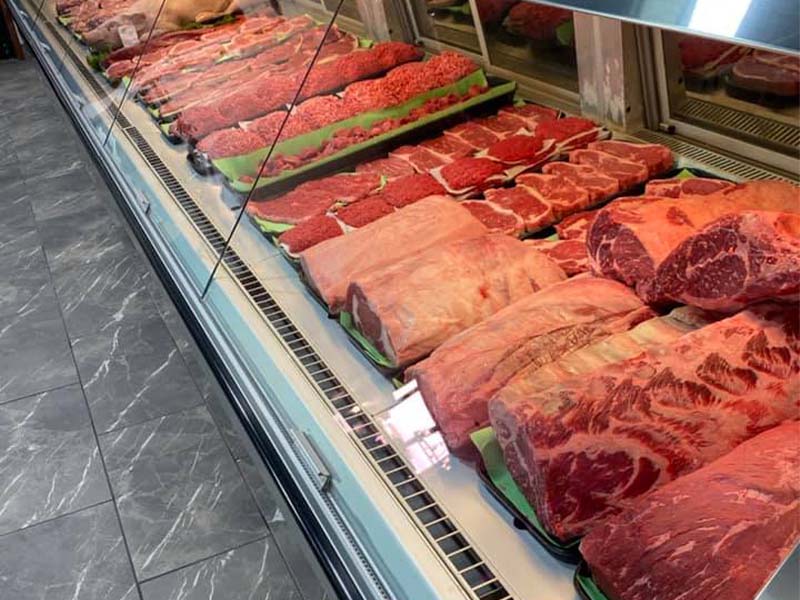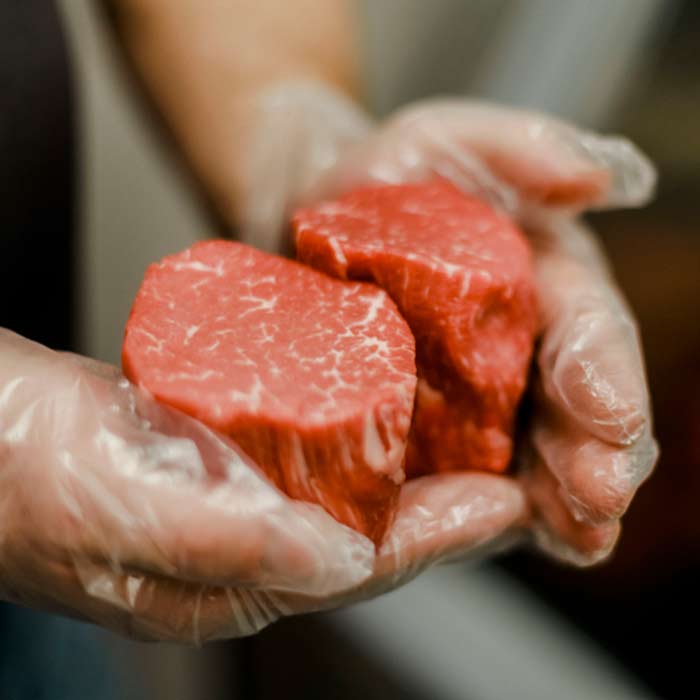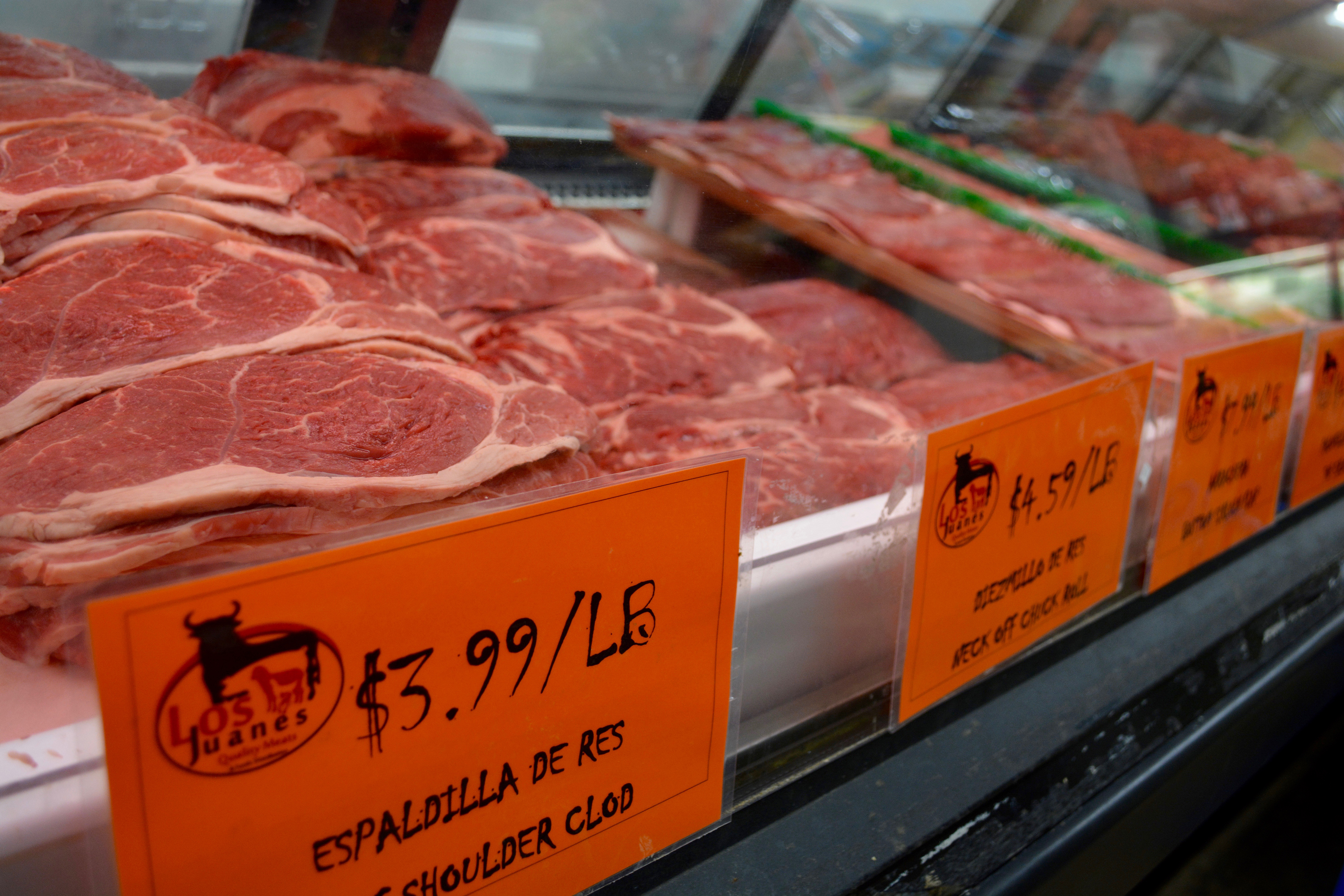Bagley Farms Meat Market Edwardsville IL: Your Relied On Resource for High-Quality Meats
Bagley Farms Meat Market Edwardsville IL: Your Relied On Resource for High-Quality Meats
Blog Article
Discover the Art of the Butcher's Cut in a Modern Meat Market
In the ever-evolving landscape of contemporary meat markets, the butcher's cut has transcended its conventional origins, merging olden craftsmanship with contemporary techniques. bagley farms meat market edwardsville il. Today's butchers are not merely processors of meat; they are knowledgeable artisans who highlight sustainability and moral sourcing. Their know-how in picking and preparing cuts tailored to specific cooking demands uses an unrivaled eating experience. What truly establishes the modern butcher apart is their ability to create a much deeper link in between customers and the origins of their meat. Just how do these masters balance practice with development, and what ramifications does this have for the future of meat usage?
Evolution of Butchery Strategies

The mid-20th century saw butchery methods additionally fine-tuned by clinical insights into muscle biology and meat aging, enhancing both inflammation and taste. Technologies like vacuum product packaging and refrigeration prolonged product shelf-life, allowing butchers to branch out offerings and improve quality assurance. This period likewise marked the rise of specific equipment, such as band saws and meat slicers, which increased accuracy and performance in meat processing.
The 21st century has actually introduced digital innovation right into the butchery world. Computerized systems currently aid in tracking animal provenance and maximizing cuts to satisfy particular client choices. Additionally, a renewal in artisanal butchery has arised, blending traditional skills with contemporary expertise to cater to customers seeking honest and sustainable meat choices. This development highlights a vibrant interaction between tradition and advancement, meeting modern needs while maintaining the craft's heritage.

Recognizing Meat Cuts

Comprehending the details of meat cuts is important for both butchers and consumers seeking top quality and value. Each cut comes from a different component of the animal, giving unique tastes, appearances, and cooking approaches. Mastery of these distinctions not just improves cooking experiences but likewise maximizes the energy of each carcass. For butchers, specific cuts mirror ability and regard for the craft, guaranteeing marginal waste and optimal yield.
The key groups of meat cuts include primal, sub-primal, and retail cuts. Primitive cuts, such as the loin, rib, and chuck, are the big sections at first separated from the carcass. Butchers then break these down even more right into sub-primal cuts, before lastly producing retail cuts available to consumers, like ribeye or tenderloin. Each phase calls for careful focus to physiological framework and muscle composition.
Comprehending muscular tissue make-up is essential; muscular tissues used much more frequently by the pet tend to be tougher and are best matched for sluggish food preparation approaches, while less-used have a peek at these guys muscle mass, like those discovered in the loin, are a lot more tender and perfect for cooking or roasting. Experience with these distinctions encourages consumers to make enlightened selections, improving their culinary endeavors.
Selecting High Quality Meat
Selecting the ideal meat includes more than simply picking a visually appealing item from the display screen. The art of selecting high quality meat requires a critical eye and understanding of particular qualities that signify freshness and excellence. Pay focus to the color; beef needs to have a brilliant, cherry-red shade, while lamb should exhibit a soft pink tone, and pork a light pink. This suggests the meat is fresh and hasn't been subjected to oxygen for too long.
Second of all, take into consideration the marbling, which describes the white flecks of fat within the muscular tissue. Correct marbling is a vital sign of inflammation and flavor, as it melts during cooking, improving the meat's juiciness. Remember, higher marbling often associates with exceptional top quality cuts, such as USDA Prime.
Texture is one more crucial variable; meat must feel strong to the touch, not slimy or extremely soft. Furthermore, be conscious of the fragrance. Fresh meat needs to have a tidy, neutral odor, without any sour or repulsive smells.
Pairing Cuts With Food Preparation Techniques
Efficiently matching cuts of meat with the proper cooking techniques is important for achieving ideal flavor and texture. Various cuts differ in tenderness, marbling, and connective cells web content, each needing specific techniques to unlock their potential. As an example, tender cuts like filet mignon and ribeye, with their fundamental marbling, take advantage of this page high-heat, quick-cooking techniques such as grilling or pan-searing. These techniques boost the meat's all-natural flavors and make certain a juicy coating.
Alternatively, harder cuts like brisket and chuck roast are abundant in collagen, which damages down right into jelly when cooked slowly. These cuts are excellent for braising or slow-moving roasting, allowing the meat to soften over time and establish deep, complex tastes. Likewise, cuts such as brief ribs and pork shoulder get on well with slow-cooking techniques, where extended cooking times change their robust textures into delicious dishes.
Lamb shanks and oxtail, which need prolonged food preparation to tenderize, are best candidates for cooking or sluggish simmering. These methods coax out rich, passionate flavors while preserving dampness. By understanding the unique qualities of each cut, chefs and home cooks alike can boost their culinary productions, ensuring each meal is both satisfying and unforgettable.
The Butcher's Function Today
Browsing the developing landscape of the modern-day meat market, the butcher's function today prolongs past mere prep work of cuts. Contemporary butchers are cooking craftsmens, teachers, and supporters for sustainable techniques.
Along with crafting exact cuts, butchers now engage straight with consumers, using cooking suggestions and tailoring options to fit private requirements and preferences. Their expertise in meat aging, marbling, and flavor profiles encourages customers to make educated choices, boosting their cooking experiences. This customized service exhibits the butcher's developing function as a trusted consultant in the kitchen.
In addition, butchers are crucial in lessening waste, making use of whole animals to produce diverse items such as sausages and supplies - bagley farms meat market edwardsville il. This comprehensive strategy not just respects the animal yet likewise lines up with contemporary sustainability goals. In this way, the contemporary butcher embodies both tradition and advancement, adapting to an ever-changing market while preserving the virtuosity find out this here and honesty of their craft

Conclusion
The contemporary butcher's craft elaborately weaves typical techniques with modern-day innovations, emphasizing lasting methods and honest sourcing. Proficiency in comprehending diverse meat cuts and quality indications empowers butchers to supply enlightened recommendations, lining up specific cuts with optimal food preparation techniques. This competence not just elevates culinary experiences yet additionally reinforces the link between customers and the origins of their food. By recognizing historic techniques while accepting modern needs, the butcher's function continues to be crucial in today's innovative meat market.
Report this page